Data has been Contributed by Mary Paulius
on Aug. 20th, 2006
Family photo & data
John
Newell
Allen
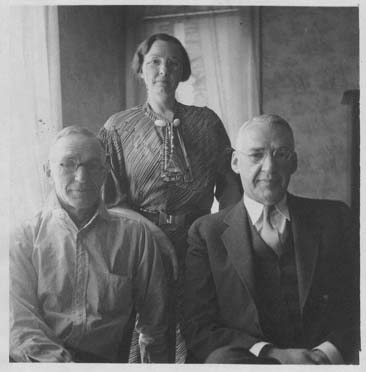
John Newell Allen b. June 25, 1879
Esther Mary Allen b. Oct. 1897 md. Louis V. Petry on April
4, 1919
Lawrence Thompson Allen b. Oct. 20, 1897
John was my (Mary Paulius) Granddad Jack; Aunt Ester gave me
a copy of the family tree that she gathered from family bibles.
I kept it and when the internet became so available and
informative I have continued on. She would be so proud.
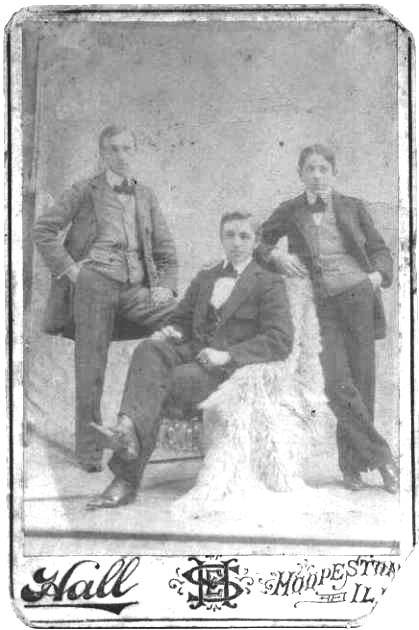
John Allen, sitting. Others unknown.

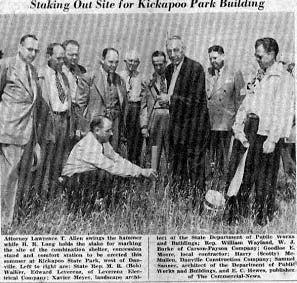
Attorney Lawrence T. Allen Swings the hammer
while H. R. Long holds the stake for marking the site of the
combination shelter, concession stand and comfort station to be
erected this summer at Kickapoo State Park, west of Danville.
Left to right are: State Rep. M. R. (Bob) Walker,
Edward Leverenz, of Leverenz Electrical Company; Xavier Meyer,
landscape architect of the State Department of Public Works and
Buildings; Rep. William Wayland, W. J. Burke of Carson-Payson
Company; Godloe E. Moore, local contractor; Harry (Scotty)
McMullen, Danville Construction Company; Samuel Sanner,
architect of the Department of Public Works and Buildings, and
E. C. Hewes, publisher of The Commercial-News.

Data has been Contributed by Mary Paulius
on Aug. 12th, 2006
Taken from the History of Vermilion Co., - Newell Township p.
962
Copyrighted 1879
Martin
J.
Barger, Bismark, farmer was born in Newell township, Vermillion co., Il
on the llth? of February, 1846, and is the son of William J.
Barger and Elizabeth (Randy) Barger. His father died when he
was quite young, and his mother marrying again, he left home and
apprenticed himself to the shoemaker’s trade, which he learned.
The subject of this sketch displayed a truly heroic
spirit in his persistent effort to become enrolled with the
Union defenders. At the beginning of the war young Barger
endeavored to get into the army while he was yet but sixteen
years of age. He was very small and delicate, and had a girlish
appearance. At that time the physique of the volunteer was
closely scrutinized, as the supply of men was greater than
demand. Co. B of the 25 Reg. ILL. Vols. was organizing at
Danville, and he presented himself to Capt. Thomas McKibbin, who
was recruiting it, The Captain “laughed him to scorn,” and told
him that they did not want boys, but men to fight at the same
time pointing to some stalwart specimens standing by. After
this rebuff, he repressed his military ardor until the early
spring of 1862, when some of the Davison and Myers boys, of the
25th, were home on furlough. He now determined on
making another trial, in the spite of the ridicule, which beset
him, from all who became acquainted with his intention. When he
applied to be mustered into the service, in the hope of saving
transportation expenses. Failing in this, he went to
Springfield, but was rejected there. Proceeding hence to St.
Louis with his companions, he was also rejected there. He then
went to Rolla, and fared likewise there. This point was the end
of railroad travel. A squad of convalescents was forming here
to move forward to join their commands, and our hero stated his
case to the commanding officer, and requested permission to join
them and be furnished rations. When they reached Springfield,
Missouri, he renewed the effort, with the same disheartening
result. He continued on the squad to Forsythe, Missouri, where
he joined the 25th ILL. Reg. He was dressed in
civilian clothing, and before he found the command, was arrested
and taken before Siegel’s provost marshal, but, on explaining
himself, was released. Making application at once to Capt. Wall
of Co. B, he was told that it was no use, he would die in a few
days. Foiled again at the last resort of appeal, he did not
know what to do, but finally decided to follow the army and be a
solder, if for nothing else than to triumph over all opposers
and opposing circumstances. He was furnished arms and
equipments, and an outfit of clothing. In about a week the army
was in motion for Batesville, Arkansas. The first day he kept
up, the second day did not get into camp with his command, the
third day did not arrive until late at night, and the fourth day
entirely lost sight of the army. He had some money, and bought
his meals along the route, camping out at night. He moved
forward every day, way worn and weary, almost fainting from
fatigue. When he came into camp at Batesville about an hour
after the command had arrived, - not having been seen for nearly
a week, and supposed to be either captured or dead – the cheers
of the boys arose to greet him, and signalized his triumph.
Henceforward he kept abreast of the best among them. From
hence the army moved to Cape Girardeau, where, after a time, it
was paid off. The captain asked him if he wanted pay. “If you
think I will make a soldier,” was the answer. “O, you’ll do!”
Replied the captain, with an air of confidence and
satisfaction. Having signed the pay roll, he was legally a
soldier; his hopes were realized and his triumph complete. Old
soldiers know the meaning of “sand” and ”grit” but few have seen
a better exhibition of it. He was in Mississippi in the summer
of 1862, and marched to Louisville under Buell, and was present
at the battle of Perryville, but not engaged. He was in the
battles of Stone River and Chickamauga; wounded and taken
prisoner at the latter place, and held about ten days, when he
was released on parole. He was not exchanged until the next
summer, while on the Atlanta campaign.
Mr. Barger remained with his regiment until exchanged,
but not doing duty. He fought his last battle at Jonesborough;
was present at the subsequent battles of Columbia and
Nashville. The term of service of his regiment having expired,
the recruits served out the rest of their time at Gen. Stanley’s
headquarters. He was discharged in March, 1865. His wound
incapacities him from hard labor, and he draws a pension.
He was married on the 19th of April to Mary
A. Steward, who died on the 16th of August, 1870. He
was married again on the 25th of September, 1873, to
Margaret W. Richie. They have four living children: Walter L.
R., Anna M., Samuel B., and John W. Mr. Barger is a republican
in politics, and in religion a Methodist.
(See
More on Martin Barger)
(See Newspaper Clipping
on Martin Barger)
SEE OBITUARY

|
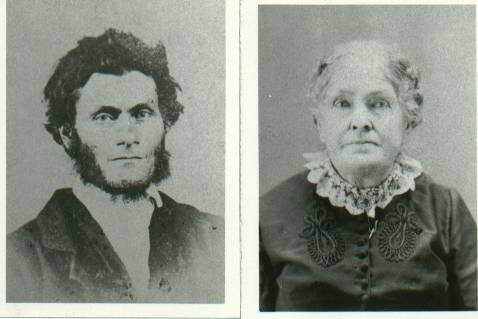 |
|
William & Elizabeth Barger
descendants of Martin Barger |

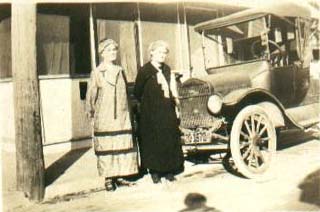
Great Grandmother Barger in Light colored dress
(Contributed by Mary Paulius)

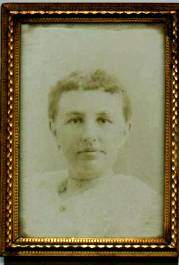
Great Grandmother Mary Allen
(Mary Paulius' Grt Grandmother)

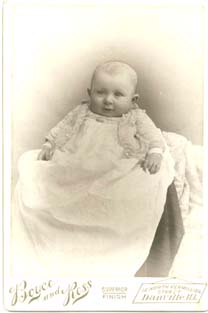
Helen Barger, grandmother of Mary Paulius


Ester Mary Allen born at Hoopeston, IL, October 20, 1897
Married Louis V. Petry, April 4, 1919.
She is sister of Lawrence & John Allen, and daughter of Charles
Allen.

**Data has been Contributed by Mary Paulius
on Aug. 20th, 2006
Taken from the Portrait and Biographical Album - pp.
387 - 389
Chatman Brothers
Copyrighted 1885
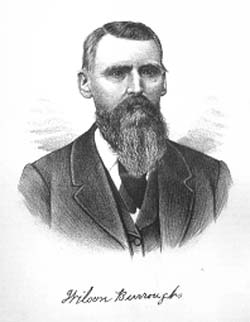
Our family connection
Wilson, born Nov. 21, 1825, died Oct. 1912, married Judith
Burroughs.
Daughter married Charles Allen.
Major
Wilson
Burroughs.
Among
the self-made men of Vermilion County none deserve greater
credit than the subject of this notice who is in possession of a
comfortable amount of this world’s goods, obtained by downright
hard labor and wise management. At the beginning, when he
started out in life for him-self, he made it a rule to live
within his income, and this resolve closely followed has given
him that independence than which, there is no more comfortable
feeling in the world. In possession of a fine home and a
splendid family, together with the respect of his fellow men, he
surely has much to make life desirable. His occupation
through life has been principally agriculture, but he is now
retired from active labor and has wisely determined to spend his
remaining years in the comfort and quiet which he so justly
deserves.
The ancestors of the Major were Southern people mostly, and his
father, Jesse Burroughs, a native of Kentucky, was born in
1803. Early in life he married May 8, 1823, to Miss Mary C.
Wilson who was born in 1804 in Pennsylvania, the wedding taking
place in Dearborn County, Ind., to which place the young people
had emigrated with their parents. They resided in that county
for sixteen years, then coming to Illinois, in 1839, settled on
a farm near Catlin this county, where they lived a number of
years, then changed their residence to Fairmount. The father
died on the 5th of March, 1880, aged seventy-six
years, ten months and sixteen days. The mother survived her
partner less than a year passing away February 25, 1881, age
seventy-six years, three months and twenty-four days.
To the parents of our subject were born nine children, six sons
and three daughters, five of whom are living and whom Wilson was
the second child. He was born Nov. 21, 1825, in Dearborn
County, Ind. His early education
was conducted in a log school-house with greased paper for
window panes and other finishings and furnishings common to the
buildings of that place and time. It was never his privilege to
attend a higher school. He had the ordinary experience of a
farmer’s boy in a new country, assisting in the development of
the farm, plowing, sowing and reaping, becoming inured to hard
work at an early age. There were very few settlers in this
region at the time of the arrival of the Burroughs family, there
being a few Indians and French on the Sault fort of the
Vermilion River.
Four days before attaining the nineteenth year of his age young
Burroughs was married Nov. 17, 1844 to Miss Martha Ann Thompson,
daughter of John and Esther (Payne) Thompson, who came to
Illinois from Dearborn County, Ind., in 1830, and settled on a
farm in Vance Township, this county. Their family included
eight children, four of whom are living and of whom Mrs.
Burroughs the second child was born May 11, 1827, in Dearborn
County, Ind. Her early education was conducted in a similar
manner to that of her husband, and her father officiated as a
pedagogue for several years. After their marriage Mr. and Mrs.
Burroughs settled on a rented farm near Catlin, and like their
neighbors frequently had difficulty to make both ends meet.
There was an abundance of labor and with but very little
return. They raised their own flax and wool, and Mrs. Burroughs
spun and wove the fashioned the garments for her family. Mr.
Burroughs often thinks of the time when he went to church
dressed in home-made line shirt and pants and a straw hat. He
maintains, however, that those were happy days, during which
mutual affection and mutual
purposes
enabled them to bear with courage the burdens of life and
sustain their hopes for the future.
Our subject operated five years upon rented land to
such good advantage that at the expiration of this time he was
enabled to purchase 100 acres – eighty acres of prairie at $5
per acre and twenty acres of timer at $4 per acre. He paid cash
down for the timber but was obliged to go into debt for the
other. He put up a frame house and haled the finishing lumber
for it from a point east of Eugene, Ind., the trip occupying
three days. He lived at this place seven years then traded it
for a tract of raw land, three and one-half miles southwest of
Fairmount. Removing to this he went through the same process as
before, bringing the new soil to a state of cultivation, putting
up another house and hauling the lumber as before from the same
place. This continued the home of our subject and his little
family until after the outbreak of the late Civil War.
Although there was much to engross the time and
thoughts of Mr. Burroughs in connection with his personal
interest he, nevertheless, responded to the call of his country
and in August 1862, entered the army as Captain of Company E 73d
Illinois Infantry. He participated with one exception, in all
the battles of his regiment, being prevented by illness from
taking part in the fight at Murfreesboro, Tenn. On the 18th
of December, 1864, he was promoted to the rank of Major.
Although in many of the important engagements which followed he
was never wounded except, as he expressed it, “in the hat.” He
has a vivid recollection of the battles of Perryville,
Chickamauga, Mission Ridge, Rocky Face, Burnt Hickory, Kenesaw
Mountain, Peach Tree Cree, Atlanta,
Jonesboro, Lovejoy’s Station, Franklin, the two days at
Nashville and the fight at Dalton and Resaca. After Lee’s
surrender he was mustered out in June 1865, at Camp Butler,
Ill.
Upon retiring from the army
Major Burroughs returned
to his farm which he occupied until 1867. Then, removing to
Fairmount, he purchased a home and has since lived retired from
active labor. After giving to his two children each a farm he
still has 324 acres left. There were born to him and his
excellent wife of four children, of whom Melissa, the eldest
daughter, became the wife of I. N. Wilcox, who died Sept. 19,
1887, leaving his widow with one child, Harry B; Elsworth
Thompson Burroughs, the eldest son of our subject, married Miss
Laura Custer, and is the father of two – Fred and
Frank—living
near Westville: Esther M., is the wife of William P.
Witherspoon and the mother of three children—Stella, Wilson W.
and Myrtle; they live in a home adjoining that of Mr.
Burroughs. The youngest child Newton W. remains at home
with his parents.
Mr. Burroughs usually votes the straight Republican
ticket but further than this takes no active part in politics
and has avoided the responsibilities of office, although serving
as Director and Trustee in his district. He has been a member
of Town Council and as ex-soldier, belonged to George N.
Neville, Post, and G.A.R. until its discontinuance. Major and
Mrs. Burroughs together with all their children, are members of
the Cumberland Presbyterian Church at Fairmount. This was
organized in 1869 and the Major has been one of its Elders since
that time. He has always entertained an active interest in the
Sunday-school in which he has held the office of Superintendent
many years. He ranks among the foremost temperance men of this
community and in all his dealings has preserved that honest and
upright course in life which as been the unrest guaranteed of a
substantial success and paved the way to a position in the front
ranks among the responsible men of his community. He knows by
what toil and struggle his possessions were accumulated, and has
a faculty of investing his capital to the best advantage.

[Source: Barb at moxy5@sbcglobal.net, who cautions "This comes from family papers, so none
of it has been "verified" other than what my great uncle wrote in 1976 when he did a little genealogy"]
Edwards,
Rev. Thomas
- was born in Buckinghamshire, England on January 18, 1832 and died October 2, 1898.
He married Emma Cadle and in 1853 they emigrated to America, in a sailing vessel that took 6 weeks to make the
trip. 9 children were born, 6 of which survived. [Milton, Billy, Rose,
Mattie and Annie Elizabeth.] Rev. Edwards
entered the pulpit of the Free Methodist church near Snider, Illinois on Sunday morning, October 2, 1898, apparently
in good health, to deliver the sermon. After announcing his text he fell to the floor and died before the congregation
could reach him. A few days earlier he had expressed a wish that he might die in the harness, serving the Lord. The funeral was preached from the text that he had taken, just before his death, from Luke 18: 26 "Who can
be saved..."

Data has been Contributed by Mary Paulius
on Aug. 14th, 2006
Taken from the
Portrait
and Biographical Album
Chatman Brothers
Page 741
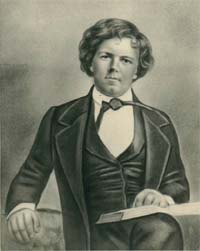
William
Irvin
Allen, my Great Great Grandfather, born 1823 -
came to Vermilion Co.,
where he was treasurer and justice of the peace, lawyer.
Brought much land in Grant Township,
Vermilion County, and sold to Thomas Hoopes (for who Hoopeston was named.
William
I. Allen, one of the prominent men of Vermilion County,
in the latter half of the nineteenth century, came from Ohio in
1844, and entered land in what is now the northwestern part of
Hoopeston. It, at that time, however, was a tract of
uncultivated land over which deers, wolves, prairie chickens and
other wild creatures, had up to this time wandered undisturbed
by man. There was not a tree or brush in sight, and the
pioneer after building his cabin, frequently stood in his
doorway and counted numbers of deer, sometimes as high as sixty
in a herd. Mr. Allen was not married when he came here,
but in 1848 he became the husband of Miss Emily Newell, the
daughter of William Newell. He broke his land and improved
his farm, working during the summer months and teaching school
in the winter. Mr. Allen was a man of fine classical
education. When he graduated from his eastern college he
wrote a letter home in Latin, which the family yet has in their
possession. Finally Mr. Allen sold out his land to
Mr. Hoopes and he settled six miles west, where East Lynn now
stands. By entry and purchase he acquired 3,200 acres of
land which was mostly devoted to grazing. He built three
houses and made other improvements remaining there until after
the breaking out of the Civil war. He enlisted in the 12th
Illinois Infantry, which regiment was first ordered to Cairo and
then to Paducah, Kentucky. After a little he was promoted
to be the captain of his company, but became disabled for
service and was returned home. He went back to his farm
but in a few months bought 500 acres in the vicinity of
Rossville. A few years after he sold out again and
returned to the northern part of East Lynn. This town was
located on a part of the old farm when the railroad came through
later.
In 1884 Mr. Allen moved to Cherry County, Nebraska, but he lived
here only four years, when he returned to Hoopeston, where he
spent the remainder of his days. Mr. Allen was the father
of six children. One of them, Mr. Chas. Allen, has been a
prominent citizen of Vermilion County, where he was born in
1851. Mr. Charles Allen was represented Vermilion County
in the state legislature for many terms and been a conspicuous
member of each session. His home has always been
Hoopeston. Mrs. William I. Allen was the daughter of
James Newell and was born in Kentucky, in 1824, coming to Vermilion
County with her parents when she was a small child. Her
father was a prominent early settler, the township of Newell
being named for him. The father of William Allen did not
come to Illinois to settle but remained in Indiana as long as he
lived.
Lawrence Allen, the grandson of Mr. William Allen and son of
Hon. Charles Allen, is at present county judge of Vermilion
County. He is a practicing attorney located in Danville.
Mr. Charles Allen married Miss Mary Thompson, the daughter of L.
M. Thompson. They are the parents of two sons, John N. and
Lawrence.
William Allen bears the distinction of being the first settler
of the northern part of the county.
Thomas Hoopes, the founder of Hoopeston, came to Vermilion
County in 1853. He had made a success of living in Ohio
and had a farm with all improvements to be desired in that state
but he came to Illinois to look at the prospects of the country.
It would seem that an eight hundred acre farm near Marion, Ohio,
would have all the best possible conditions for any one, but it
appears he was attracted to the newer country and turned with
interest, if not longing, toward the natural grazing lands of
the prairies of the northern part of Vermilion County.
That he was satisfied with conditions and the prairie called him
with force, is indicated by the fact that he bought 480 acres of
land from Mr. W. I. Allen on which he established his new home.
This land lay northwest of the present site of Hoopeston,
crowning a hill on the old Chicago road. As time passed Mr.
Hoopes added to his land until he had seven or eight
thousand acres. He became the most extensive stock raiser
in this part of the country sending his product to the eastern
markets, and spending his profits for more land. In July,
1871, the tracks of the C. & E. I. R. R. Were laid across his
farm and the year following the Lake Erie & Western was running
trans. Mr. Hoopes saw the opportunity to build a town of
importance at the crossing and at once had his farm platted and
sold it for town lots. He later sold one thousand acres of
his farm to the firm of Snell and Taylor, who platted it and
sold it for town lots. After that Mr. Hoopes did not do
much save to oversee his invested interests. He traveled
much in search of health for his wife. Mrs. Hoopes died in
1886 and Mr. Hoopes survived her until 1893.
-----------------------------------------------------------------------------
(The following was contributed by Mary Paulius)
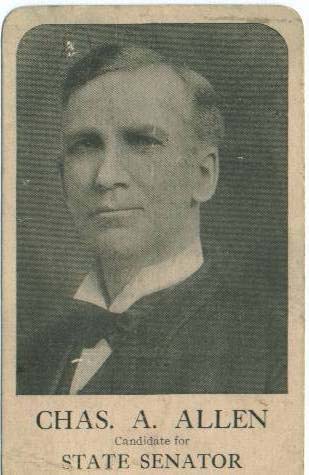
Charles A. Allen
Grandfather of Mary Paulius
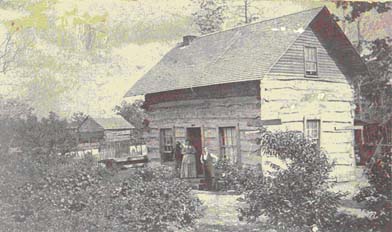
Charles A. Allen, when campaigning for Illinois State Senator,
August 1908, outside
Rossville, Illinois.
Allen,
Hon.
Charles A.,
member of the
Thirty-Sixth General Assembly from the Thirty-First District of Illinois, was
elected on the Republican ticket in 1884, 1886, and 1888, and is consequently
serving his third term. He has brought to his position fine natural abilities,
a large experience, and a conscientious fidelity to duty, which was enabled him
to study the best interest of his constituents, to whom he has given uniform
satisfaction.
Mr. Allen is recognized as a
gentleman of more than ordinary ability, and has been prominent
in the councils of his party for years, both in Central Illinois
and in the Legislative halls at the Capitol of the State. In
1885 he served on the Judiciary Committee and with several other
important bodies, and in 1887 was Chairman of the Railroad and
Warehouse Commission, being that year also on the Judiciary
Committee. In 1889 he was chairman of the Committee on
Corporations and Educational Institutions, while at the same
time remaining with the Judiciary Committee. During the lively
discussion over the matter of Gen. Logan’s appointment we
was the first man on the roll call, at that time a very
important position.
All the interests of Mr. Allen
have been centered in this county and vicinity, and here he has
spent nearly his entire life. He was born in
Danville, July 26, 1851, and
two years later the family removed to the Ridge, in the northern
part of the county, where they were the earliest settlers.
Young Allen after leaving the district school entered the law
department of the Michigan
State University, by which
he was graduated in 1876. He began the practice of his
profession in Rossville, where he remained until 1881, when the
new town of Hoopeston began to assume encouraging proportions,
and he, accordingly, removed thither, where he has since made
his home. In connection with his practice he has dealt
considerably in real estate, and is now the owner of 1,200 acres
of land. In the meantime he became one of the most prominent
attorneys of this part of the county, and he has held various
responsible positions connected with local affairs. Socially,
he is a charter member of the K. of P., and also belongs to the
Masonic fraternity and the I. O. O. F.
In Rossville, on the 4th
of April, 1879, Mr. Allen was united in marriage with Miss
Mary Thompson, daughter of L. M. Thompson, a sketch of who appears
else in this volume. Of this union there have been born two
bright children, both sons – John N. and Lawrence T. The family
residence is pleasantly situated, and forms an attractive resort
for its most cultivated and refined element.
The father
of our subject is William I. Allen, the first man to settle
along the Northern line of this county. He is still living, and
is represented on another page in this work.

Home of Hon. C. A. Allen
Fourth & Washington Streets
Hoopeston, Illinois

*The following has been contributed by Mary Paulius
Danville, Illinois Commercial News
April 10, 1960
Lawrence
T.
Allen,
Jr., a member of the Danville law firm.
Allen &
Allen was Vermilion County's first public defender... His legal
practice dates back to 1941, when he was admitted to the
Illinois Bar following his graduation from De Paul University,
Chicago with an LLB degree... Four years later, after his
release from military service Allen "opened shop" with his
brother John T. Allen. He was assistant supervisor for
Danville Township, assistant to the attorney general of the
United States in this area, and a candidate for probate judge
two years ago. Besides this, Allen is active in and a past
president of the Big Brothers Assn., a past chairman of
Vermilion County's TB Drive and chairman and co-chairman of the
American Legion's Sunshine Health Camp here. Allen was
born in Champaign, Feb. 2, 1915, the son of Lawrence T. and Bess Trevett Allen. He attended Garfield Grade School and
Danville high School, and then spent three years at Tabor Naval
Academy of Marion Mass. He spent his first year of college
at the University of Illinois. That same year he married
the former Miss Jane Griffith of Alexandria, La. In 1939
he enrolled at DePaul University and was graduated from there in
1941. From June 1942, until 1945, Allen served in the Air
Force, both in this country and overseas. Allen is the
fourth generation of his family to practice law in Vermilion Co.
His father, who died in 1950 was a Vermilion County judge, and
his grandfather Charles A. Allen was a local attorney and a
member of the Illinois State Legislature. Two of the most
satisfying experience of his career thus far, includes a
reversal of a criminal conviction he won for a client in the U.
S. District Court of Appeals in Chicago, and the successful
restoration of local control over a Danville union. The
father of two Children, Tom 8? and Abby 11, Allen and his
children reside at 14 Maywood Dr. He is a member of the
First Presbyterian Church, YMCA, a director of the Trevett-Mattis Bank of Champaign, Elks Lodge 332, American
Legion Pollywog Asst. and the Illinois and Vermilion County Bar
Association. Allen's principal hobby is fishing but
driving shaw ponies is also a pastime attraction for the
Danville attorney.

The following was contributed by Mary Paulius
from Portrait and Biographical Album
Page 506, 507, 508
Chapman Brothers
Copyrighted 1889
Thomas
Hoopes.
The old pioneers, who are fast passing away are naturally looked
upon with that interest and respect with which mankind is prone
to regard those things which, when once departed, can never be
recalled. These thoughts involuntarily force themselves upon the
mind in contemplating the career of the subject of this sketch,
who was the first settler at Hoopeston, and whose honor it was
named. He came to this county, and invested in land Aug.9, 1855.
Returning to Ohio, he remained there until April 8, 1855, when
he with his family removed to this county, and endured his full
share of the hardships and privations of life in a new
settlement, operating as a tiller of the soil a series of years,
and is now enjoying the fruits of his labors amid the comforts
of a pleasant and well-ordered home in the southeastern part of
the village, which has been the object of his fostering care. He
retired from the active labors of life in June, 1882, and
occupies a tasteful and commodious brick residence at the corner
of Penn and Fourth streets. He is the owner of a good property,
which he accumulated solely by his own industry and
perseverance. He owns 2,233 acres of fine land, contracted to
young men, and upon which they pay a low interest. He also
controls 5,180 acres in his own name, making the total of his
land holdings 7,413 acres.
Mr. Hoopes was born on the 26th of June, 1806, in a log cabin
in the woods of what was then Jefferson County, but is now the
southeast corner of Harrison County, Ohio. His father in 1810
removed to a point seven miles distant in the same county, and
there our subject sojourned until 1846. He pursued is studies
mostly at home under the instruction of his mother, and also
attended a private school. He remained a member of the parental
household until reaching his majority, soon after which time
occurred the death of his father, the property was divided.
Thomas in 1829, purchased a two-thirds interest in the estate,
and carried on the improvements which had been begun, clearing
the land of the remaining timber upon it and preparing the soil
for cultivation. There being six children in the family, the
share of Thomas, estimated to be $335.04 in value, was
accordingly one-sixth of the estate, and in contracting to buy
out the other heirs, subject to the mother’s life interest, he
was obliged to go into debt. The task before him he was aware,
required more than an ordinary amount of courage and
perseverance, but nature had generously endowed him with these
qualities, and from that modest beginning he succeeded in
building up the ample property of which he is now the owner.
Our subject continued on the old farm until the summer of
1846, and on the 30th of July that year, was united in marriage
with Miss Anna Gray, of the same county. Shortly afterward they
removed to the vicinity Marion Ohio, where Mr. Hoopes purchased
a farm of 803 acres on what was familiarly known as Sandusky
Plains, and added 100 acres three years later. It was nearly
fenced and has been largely devoted by our subject to pasturage.
Mr. Hoopes began the improvement of his property, and in 1850
put up one of the first brick houses in that locality. He
devoted his land mostly to grazing, and gathered together a
large flock of sheep. He also took in cattle to feed, and
continued this course profitably for a period of nine years. His
property naturally increased in value, and became the source of
a comfortable income.
In 1853, however, Mr. Hoopes decided to see what lay beyond,
and accordingly disposed of his interest in the Buckeye State,
and after residing for a year in Marion Village came here to
buy, moving here with his family in 1855. There were then but
few settlers in Grant Township, this county, and frequently the
traveler would go from fifty to 100 miles without passing a
farm, a large proportion of the land still belonging to the
Government. Mr. Hoopes at once bought of W. I. Allen
180 acres,
upon which he established a homestead, and was uniformly
successful in his labors as an agriculturist and stock-raiser.
He later purchased additional land, and in due time became the
owner of 7,413 acres; besides this he sold several thousand
acres at different times. The first house which he put up was a
frame structure of fair proportions, located at the top of a
hill on the old "Chicago Road," lying north of the present site
of town. He occupied this with his family for a number of years,
and added other buildings as time passed on. He still continued
sheep-raising, and frequently pastured large droves of cattle
for other men. From the first he made it a rule to keep out of
debt, live within his income, and meet his obligations as they
became due. Mr. Hoopes, in 1863, disposed of his flocks of sheep
on account of the difficulty in getting help to look after them,
and at the same time laid aside many of the cares which had been
his for many years. Since that time he has taken life more
easily. On the 4th of July, 1871, the track of what is now the
Danville and Vincennes Railroad was laid across what is now Main
St., and the year following the Lake Erie & Western began
running its trains. Mr. Hoopes always a man of wise forethought,
judged that here would be a good site for a town, and
accordingly commenced laying out a portion of his farm in town
lots. He did not undertake town-making, but laid out his land
after it had been started. Thereafter he engaged in selling
these lots and looking after the interest of the embryo village.
The town was named Hoopeston by one of the prospectors of a
railroad. Mr. Hoopes afterward sold 1,000 acres to the firm of
Snell & Taylor, who had a part of the land platted, and sold
town lots. In 1873 Mr. Hoopes purchased a house a short distance
west of that which he now occupies, and moved into it, occupying
it until 1882, when he erected his present residence. In
connection with his dealings in real estate, he still continued
the general supervision of his farm, but employed agents to
carry on the work. In the fall o 1874 he started for the Pacific
Slope, arriving in California October 28, and sojourned there
until the 27th of March, 1875. In the meantime he traveled over
a large portion of the country with his wife, the latter being
in delicate health.
Mr. Hoopes cast his first vote in 1828 for a defeated
candidate being then identified with the old Whig party, but
upon its abandonment cordially endorsed the Republican party,
whom he has since for the most part given his support. In local
affairs however, he is not bound by party ties, but aims to
support the man best qualified for the office. During his long
residence in this county, he has pursued that upright and
honorable course which has gained him the confidence and esteem
of his fellow-citizens, striving always to be not only just, but
also generous as he has had opportunity.
Mrs. Anna (Gray) Hoopes was born in Harrison County, Ohio,
July 25, 1810, and was the daughter of Thomas and Hannah (Eckley)
Gray, who spent their last years in Fulton County, Ill. To our
subject and his estimable wife there were born no children. Mrs.
Hoopes departed this life on the 29th of April 1886, greatly
mourned by her husband, and regretted by all who know her. She
was a devoted wife, a lady possessing all the Christian virtues,
and who was the uniform and efficient helper of her husband
during his toils and struggles, and his cheerful, faithful
companion amid the hardships and difficulties which they
encountered. Her name is held in kindly remembrance by all who
knew her.
Nathan Hoopes, the father of our subject was born in Chester
County, Pa., May 5, 1765, and was the son of Daniel A. Hoopes, a
native of the same county. He lived there until reaching man’s
estate, and was married to Miss Elizabeth Gardner. Soon
afterward they removed to Ohio, and settled in the woods of what
was then Jefferson County, about seven miles from where the town
of Mount Pleasant grew up. He put up a cabin and began felling
trees, and preparing a portion of the soil for cultivation. His
first property consisted of only thirty acres, and at this
little homestead occurred the birth of his son Thomas.
Later the father of our subject disposed of this property,
and purchased 160 acres of land, where he opened up a good farm,
and upon which he spent his last days, passing away in the
spring of 1828. The household circle was completed by the birth
of seven children, six of whom lived to years of maturity,
namely: James and Joseph, who were residence of Morgan County,
Ohio, until their death; Sarah, Mrs. Nathan Williams of Harrison
County, Ohio; Thomas, our subject; Ann, the widow of George W.
Scott, living in Camp Chase; and Mary, Mrs. W. Spurier, who died
in Harrison County, whiter she returned from Morgan County. The
mother survived her husband only six years, her death taking
place at the old homestead on May 12, 1834. She was a member and
minister of the Society of Friends. Mr. Hoopes, our subject is
not a member of any society.
Mr. Hoopes owns large tracts of land, also buys any tract a
young, but honest and industrious man may desire, lets him have
it and pay a very low rate of interest, instead rent, and avoids
double taxation; thus helping many young me to start, simply for
the purpose of doing what good he can if he is proud of
anything, it is of that, to be considered a philanthropist.

From The Early Pioneers of Vermilion Co.
(Contributed by Mary Paulius)
L. M. Thompson
Few men who have undergone the
hardships Incident to the life of a pioneer live to retain the
vigor of youth as thoroughly as Louis M. Thompson, who was born
seventy years ago last month. Dearborn County, Indiana was his
birthplace. He came to Vermilion County with his parents in the fall of 1831, and has lived here ever since.
In 1848 he was married to
Judith A. Burroughs and the same year moved and settled on a
farm he still owns, which lies southeast of the city and corners
with the corporation. Here he resided until 1873, when he moved
to Rossville, spending the years in looking after his land
holdings which have increased to 800 acres. The farm on which
he first settled was raw prairie and he broke it up with and
made the improvements with his own hands. In those days he
hauled his corn to Attica and Lafayette, Ind., the trip
frequently requiring two days, when he would "Stake out" his
oxen and sleep under his wagon of a night. The few houses in
Rossville were all log structures.
In February, 1890, his wife
died and late in 1891 he was married to Mrs. Belle Bales, who is
proving a loving helpmate to him in every way. Six children,
five girls and one boy, were the fruit of his first marriage.
The girls are all grown to womanhood and are presiding over
homes of their own with that dignity and grace that makes an
ideal wife and mother. The son, John G., is assistant attorney
general of the United States.
Mr.
Thompson has served his community as town clerk, seven years
collector; Collector twice, and road commissioner.


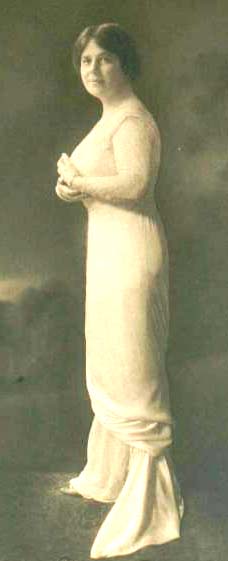
Bess Thompson
(Mary Paulius' aunt)

The following pictures are of Ira Richard Jones
and wife Emily Newell (Allen) Jones
The following pictures are of Mary Paulius'
grandparents.
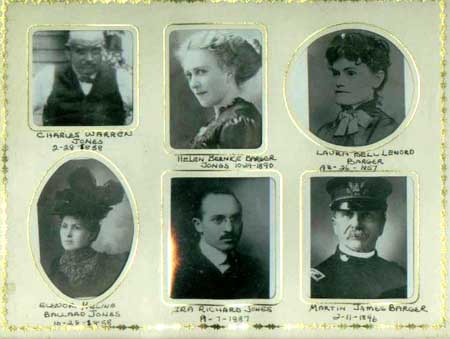
Charles Jones
Eleanor Ballard |
Helen Barger
Ira Jones |
Laura Bell Leonard
Martin Barger |
Mary's Great Great Grandparents
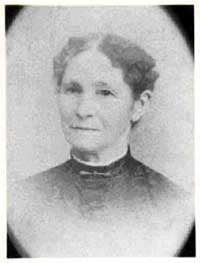 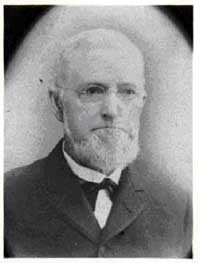
|
Elizabeth Barger |
William Barger |

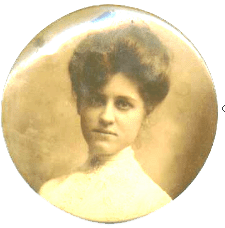
Grandma Winnie, on round metal disk print
Mary Winifred (Hess) Allen
Contributed by Mary Paulius
See
obituary

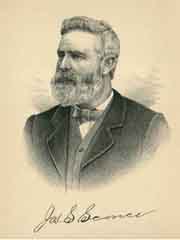
Jos. S. Sconce
Contributed by Mary Paulius

Henry Cotton Biography
Posted
with permission
“Portrait and Biographical Album, Vermilion Co., IL “
Chicago: Chatman Brothers, 1889
Page 484, 485 & 486
Henry Cotton,
familiarly known throughout Westville and vicinity, as “Uncle
Harry” and “The Squire,” is one of the most popular
men in the place, and an especial favorite with the “boys”.
There is not a more genial or companionable individual in
this region, and he has the faculty of preserving, under all
circumstances, that equable temperament and serene
countenance, which is one of the man’s best gifts. He
occupies himself as a general merchant and without being
wealthy is comfortable circumstances, enjoying a fair income
and a modest home. He is one of the pioneers of this section
and has been prominent from the start, serving as Postmaster
and occupying other positions of trust and responsibilities.
Our subject was born in Decatur County, Ind., March 19,
1822. His father, Robert Cotton, was born in
the vicinity of Beardstown, KY., and immigrated to this
county in the fall of 1822, during the period of its
earliest settlement and when few white men had ventured onto
the frontier. Henry was then an infant of six months
and therefore one of the oldest living settlers of the
county. Mrs. Hannah (Howard) Cotton,
the mother of our subject, was a native of the same place as
her husband and was there reared and married and became the
mother of two children in the Blue Grass State. Upon leaving
Kentucky they removed to Switzerland County, IN., and not
long afterward to Decatur County, whence they came to this
county. The Cottons trace their ancestry to the
stanch old Puritan stock of Massachusetts, where John
Cotton, one of its first representatives in this country,
settled at a very early date and figured conspicuously in
public affairs.
The father of our subject only lived two years after
coming to this county, dying when a young man, in 1824. He
left a widow with a family of seven children of whom Henry
was next to the youngest. He, like his brothers and sisters,
grew up amid the wild scenes of pioneer life at a time when
wild animals abounded in this region, deer being especially
plentiful, and wolves howled around their cabin door at
night. Frequently the broad and inhabited prairie covered
with wild dry grass, was lighted up by a conflagration,
started perhaps by some unwary traveler dropping a spark
from his pipe, when the smoke and flames would sweep perhaps
for miles destroying animal life to a great extent and
threatening that of human beings. Every level –headed
settler made it his first business to protect himself from
this catastrophe by plowing around his dwelling and thus
destroying the food for the flames which could be
forestalled in no other way.
The education of the Cotton children was
confined to a few months instruction each year in a log
school-house, with puncheon floor, seats and desks made from
unplanned slabs. The window panes of greased paper, a huge
fire-place extending nearly across one end of the building
and the chimney built outside of earth and sticks. The
system of instruction corresponded with the time and place,
little being required of the teacher except to be able to
read, write and “Cipher.” Henry Cotton,
however, availed himself of these meager advantages and in
1844 began teaching and followed this during the winter
season for two or three years. In the meantime on the 16th
of January, 1845 he was married to Miss Elizabeth Getty
family of Pennsylvania, from which the town which gained
historic fame during the Rebellion was named.
Upon reaching manhood, our subject, leaving the farm
took to the river and followed the life of a flatboat man
during which he made eighteen trips to and from New Orleans.
It was upon one of these trips that he met his future wife
at Vincennes, IN., where in due time they were married and
began housekeeping, residing in Vincennes eight years.
When not on the river Mr. Cotton occupied
himself as a carpenter. Upon coming to this county, he
began farming in Danville Township and was on the highway to
prosperity, having comfortable means and last but not least,
a family of four interesting children. This happy state was
broken in upon by the notes of war, and in response to the
call of President Lincoln for 300,000 men for
three years, our subject enlisted July 9, 1862, in Company
G, 125th Illinois Infantry. He was mustered into service at
Danville, where the company remained drilling for a time,
then was order to Cincinnati, Ohio, and from there to
Louisville, KY. They drilled also at the latter place and
then proceeded to Gallatin, Tenn., where during the arduous
duties assigned him, Mr. Cotton was
over-heated and suffered so long thereafter from illness
that he was obliged to accept his honorable discharged in
February, 1863.
In the fall of the year above mentioned Mr. Cotton
changed his residence to Knox County, IN, where he sojourned
ten years. His next removal was to Clay County, this State,
and from there he returned to this county in 1882 and
engaged in mercantile business at Westville. On April230,
1883 his store and stock was destroyed by fire but he
rebuilt and in time attained to his old footing financially.
He was appointed Postmaster of Westville under President
Arthur and served three years. For four years he has been
Justice of the Peace and has discharged the duties of this
office with credit to himself and satisfaction to all
concerned.
Mr. Cotton cast his first presidential
vote for Henry Clay in 1844, being a member of the old Whig
Party. Upon its abandonment he cordially endorsed Republican
principles and has since given his undivided support to this
party. Socially he is a prominent member of Kyger Post, G.
A. R. at Georgetown. He is the father of six children the
eldest of whom, Robert D. died September 30, 1888;
and left two children Mary J. died in infancy;
George Elmer is a well to-do farmer of McLean
County, this State, and the father of one child; Ellen, the
youngest of the family, is at home with her parents. Both
Mr. Cotton and his estimable wife are members in
good standing of the Christian Church

Hiram Makemson
Posted
with permission: Mary Paulius
PORTRAIT AND BIOGRAPHICAL ALBUM
Page 718
Copyrighted 1889 Chatman Brothers.
Hiram
Makemson is the youngest of four
children born to Andrew and Hannah Makemson, natives of
Kentucky, where they were residents of Harrison County until
1828, when they emigrated to Illinois and settled in Newell
Township, about two and one-half miles from where their son,
the subject of this sketch, now resides. Mr. Andrew
Makemson
was a stalwart Republican, and always faithful to what he
considered the best interests of his country. He and his
wife were both worthy and sincerely good members of the
Methodist Church, and were highly esteemed not only by their
religious associates but also by the large circle of friends
which their many good qualities had gathered around them.
Their death was a loss to the community and they were
followed to their last resting place in Lamb’s Cemetery by a
large concourse of relatives and acquaintances. Mr. Makemson
died in 1880, and his wife in 1889.
The subject of this sketch was born in
Harrison County, KY., April 2, 1825, hence was only three
years old when his parents removed to Illinois. His youthful
days were enlivened by witnessing, and when old enough
participating in the various hunting parties which where
made up from time to time in the neighborhood, which
sometimes had for their object the providing of food for the
table, and at others the dispersing of depredatory packs of
wolves or roving bands of Indians, which served to make
things lively for the settlers, and varied the monotony of
the usual routine of farm life.
Mr. Makemson remained under the parental
roof tree until he reached his majority, getting such
education as the short term of the public school each year,
assisted by an occasional term of subscription school,
afforded, and making himself useful when out of school in
whatever capacity he could be employed. On April 29th 1852,
he took to wife Miss Prudence Campbell, a charming maiden of
Newell Township, where she was born September 18, 1834. The
was the daughter of John and Almira Campbell, natives of New
York, who came to Illinois in the early days of its
settlement and located in Newell Township, where they reared
a family of nine children, of which Mrs. Makemson was the
youngest.
Upon the return of Mr. and Mrs. Makenson
from Danville, where their marriage took place, they
immediately entered into possession of their present home,
where they have continued to reside happily and contently
ever since, rejoicing in the addition to their family of
five children, namely: Amira D., who remains at home to
comfort and cheer the parents for the absence of the other
members of the family; Mary A., wife of W. W. Current:
Bertha P., wife of Morton Bird, and lives in this county;
Sherman T. married Miss Sadie Bird, on the 4th of November,
1886, and lives on a portion of is father’s farm. Mrs.
Sherman Makemson is a daughter of Moser and Polly Bird, and
shares in the prosperity and excellent reputation which her
husband justly enjoys as a resident of the township. They
have no children. Joseph C., the youngest child, is also at
home, where he assists his elder sister to drive dull care
away from the old place.
Mr. Makemson owns, and with the
assistance of his sons operates, an estate of 816 acres of
land, all lying in Newell Township, and under good cultivation.
Politically, he votes with the Republican party, in whose
principles he is a firm believer.

John
Cessna
(Posted with permission by Mary Paulius)
Portrait and Biographical Album
Page 313 and 314
Printed Chatman Brothers 1889
John Cessna is
busily engaged in tilling the soil and raising stock on his
well-managed, comfortably improved farm on section 10, Pilot
Township. He is a representative self-made man and by
industry and prudence has succeeded in accumulating a
competence and in building a cozy home where he may pass his
declining years well fortified against want and poverty.
Mr. Cessna was born in Cochocton County, Ohio, June 29,
1833, his parents being Jonathan and Margaret (Divan)
Cessna. His father was born in Pennsylvania in 1810, his
mother in Belmont County, Ohio.
At the age of seventeen the subject of this sketch
accompanied his parents to another home near Toledo, Ohio,
where they lived but a short time. They then went down the
Ohio River on a trading boat to Cairo, Ill., where the
father died in 1844. After that sad event the subject with
his mother and sister returned to Coshocton County, Ohio,
and in about two years the mother remarried again, becoming
the wife of Joseph Richardson. In 1848 the family once more
came to Illinois and located on the homestead Mr. Richardson
then purchased in this county, and now occupied by mother of
our subject. Mr. Cessna has but one sister now, the widow
of Elisha Grimes, living on her husband’s homestead. She
has eight children, namely: John M., Elisha C., William and
Jacob (who are deceased), Alvin, Margaret, Ellen, Charles
and Belle.
John Cessna, of who we write, commenced life as a farm
hand. He wisely saved his earnings and in a few years had
money enough to buy a good farm. In 1857, smitten with a
desire to accumulate wealth still faster, he went to
California by the way of New York and Panama. In the Golden
State he found employment on a ranch and was well paid well
for his work in that country, where good reliable help was
scarce. Twenty-two months of life in that climate
satisfied our subject and he retraced his steps homeward,
and on his return invested some of his capital in an 80 acre
farm, which he subsequently disposed of at a good advance
price, and then bought his present homestead, which then
comprised but 140 acres. He has kept adding to his landed
property till he now owns 260 acres of fine land, with
excellent improvements, that add greatly to its value, and
he is profitably engaged in a general farming business,
raising cattle, horses and hogs of good grade.
Mr. Cessna has twice married. The maiden name of his first
wife was Ann Rebecca Truax. She was born in Muskingum
County, Ohio, in 1841, and died in the pleasant home she had
helped her husband to build up, in 1876. Her people were of
Irish origin. Of her marriage with our subject seven
children were born, two of whom are dead; those living are
William, Mary, Charles E., Lemuel E., and Elizabeth. Mr.
Cessna was united in marriage to his present wife in 1877,
and to them have come six children, two of whom are dead,
Frank and Johnathan. The others are Ann R., Albert B., Mont
P., all at home.
Mr. Cessna has been a hard working man, but his labors have
been amply rewarded, as he knows well how to direct his
energies so as to produce the desired results. He is
possessed of sound sense, discretion and other good traits,
is honest and strait forward in his manner and dealings, and
is prominently connected with the Masonic order as Master
Mason.
In politics, he is a good democrat, and is loyal in every
fiber to his country. He has held school offices and has
served on the juries of his county. Our subject’s mother
died since the above was written, her death occurring June
30, 1889.

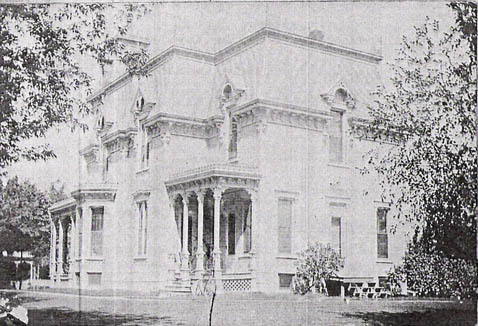
William Moore Mansion
Fourth & Penn Streets, Hoopeston, Illinois

Posted
with permission:
Prucy Paulis
“Portrait and Biographical Album, Vermilion Co., IL “
Chicago: Chatman Brothers, 1889
Page 398, 399
George M. Villars
George M. Villars, one of the best known
residents of this county, and the owner of a fine
property, was born in Danville Township, Oct. 16,
1832, and is consequently but little past the prime
of his life. He is the offspring of a good
family, being the son of the Rev. John Villars,
who was born in Jefferson County, PA., Feb. 14,
1797.
The paternal grandfather of our subject was
James Villars, who it is believed was
also a native of Jefferson County, Pa., and who was
born July 28, 1774. His father was a native of
England, and it is supposed spent his last years in
the Keystone State. Grandfather
James Villars was there reared to man’s estate
and married Miss Rebecca Davison,
April 19, 1796. In April, 1806, they removed
to Ohio by means of a flat-boat, which landed them
at Cincinnati, then but a hamlet. They settled
in what is now Clinton County, where Grandfather
Villars purchased quite a large tract of land
and improved the farm, upon which he resided until
his death. In 1812 he put up a substantial
double hewed-log house with a large stone chimney in
the center of the building and a huge fireplace on
each side. The structure stood for a great
many years and was a fitting monument to the
character and enterprise of the builder.
The father of our subject was piously inclined
from his youth and when a young man united with the
Methodist Episcopal Church. In 1823 he was
given a license to exhort and from that time labored
as a local preacher. In the fall of the 1830
he came to this county with his family, making the
journey overland with teams, camping and cooking
along the wayside and sleeping in the wagons at
night. He had, however, visited the country
prior to his removal here and had entered a tract of
land upon which he had a log house built ready for
the family upon their arrival. From that time
on, in addition to his ministerial labors, he
carried on the improvement and cultivation of his
land, living there until 1857.
In the year above mentioned the father of our
subject decided to seek another home beyond the
Mississippi, and immigrated to Nemeha County, Neb.,
where he was one of the pioneers and to which he
made the journey overland as before. He lived,
however, only until the following year, his death
taking place in March 1858. He had been twice
married, the first time, March 14, 1815 to Miss
Elizabeth McGee. This lady was born Sept.
25, 1797, and died in Vermilion County, April 22,
1848. His second wife was Elizabeth
Campbell, and they were married Oct. 19, 1849.
She was a native of Harrison County, Va., and born
Sept. 2, 1816. Of the first marriage there
were born ten children and of the second marriage
three. The father left the Methodist Episcopal
Church after a time and identified himself with the
United Brethren and was a preacher in the latter
Church at the time of his death. He was a life
member of the American Bible Society and bequeathed
to it the sum of $6,000.
Our subject still retains a vivid recollection of
the many of the incidents of pioneer life in
Illinois, when deer, wolves and other wild animals
abounded together with Indians who were often to be
seen in roving bands going across the prairie.
He acquired his education in the primitive schools,
the first of which was taught in a log house.
The seats and flour were made of puncheon, and
writing desks were manufactured from planks with
wooden pegs for legs. As soon as old enough,
young Villars began to assist his father in
the various labors of the farm and remained under
the parental roof until the time of his marriage.
He then settled on a tract of land which his father
had given him and upon which were two log cabins.
In one of these our subject and his bride commenced
their wedded life. Their home consisted of one
room sixteen feet square, and in this they lived a
number of years and until they were able to put up
their present residence. The furnishing of
this humble dwelling was in keeping with the fashion
of that day, but they probably experienced as much
happiness and content as the young people who now
commence life upon a grander scale.
Mr. Villars has been life-long farmer and
still owns the land upon which he settled at the
time of his marriage. He has now 186 acres
located five miles east of Danville on sections 7
and 12 of Danville Township. It has all been
brought to a good state of cultivation, is well
stocked, and upon it Mr. Villars has
erected a good set of frame buildings. His
marriage with Miss Amanda Srouf was
celebrated at the bride’s home in this township,
Oct. 20, 1853, and there have been born to them
eleven children, of whom the record is as follows:
John W. married Martha Mable,
and is a resident of Warren County, Ind.; George
Henry married Martha Brewer, and lives at
Fort Belknap, Mont.: Martha J. is the wife of
William P. Lynch, of this county:
Rachel, Mrs. Presley Martin, lives in Vermillion
County, Ind.; Augusta is the wife of
William Gnaden, and they live in Danville
Township; Ella married William F. Shaffer,
and resides in Warren County, Ind: Sophia and
Janet remain with their parents.
Mrs. Villars was born near Hanover,
Hancock Co., Ind., Feb 7, 1832, and is the daughter
of Sebastian Strouf, who was born in
Kentucky, July 25, 1796. Her paternal
grandfather, John Strouf, it is
believed, was a native of North or South Carolina,
and his father, the great-grandfather of Mrs.
Villars, was a native of Germany.
John Sprouf removed from one of the
Carolinas to Kentucky, where he was an early
pioneer, then moved on into Ohio, locating in Brown
County during its early settlement. He served
in the war of 1812 and spent is last years in the
Buckeye State.
Sebastian Sprouf, father of Mrs.
Villars, was born July 25, 1796, and was a young
child when his parents settled in Ohio, where he was
reared to manhood, and was married Sept. 11, 1817,
to Vallyrier Parker. She was born in
Ohio and the date of her birth was June 25, 1796.
In 1830 they removed to Indiana, settling in Hancock
County, where they lived until 1834. That year
they came to this county, making the journey
overland with teams, locating in what is now Newell
Township. The parents remained residents of
this township until their decease, the mother
passing away Oct 29, 1874, and the father less than
a year later.
There were born to the parents of Mrs.
Villars, eleven children, viz: Nancy,
Martha, George, Mary, Wilson, Sarah, Jane, Amanda,
Arie and Christiana. Four of these,
Mary, John, Arie and Christiana, died
young. Our subject and his estimable wife are
members in good standing of the United Brethren
Church, of Pleasant Grove, in which Mr. Villars has
served as Class-Leader and labored in the
Sunday-School. In politics at large he was a
sound Democrat, but in local affairs votes
independently, aiming to support the men whom he
considers best qualified for office. We invite
the attention of our numerous readers to a fine
engraving of the handsome home and surroundings of
Mr. Villars.
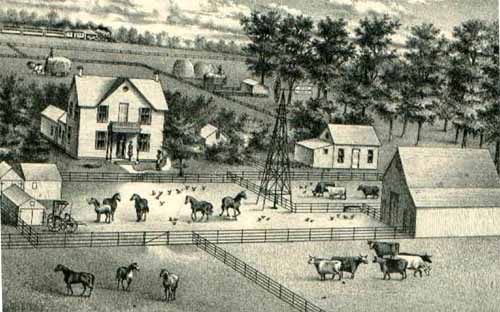
Sketch of George M. Villars' house
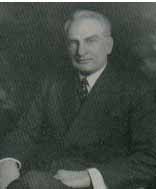
Earnest Norris, President
More on
Mr.
Norris
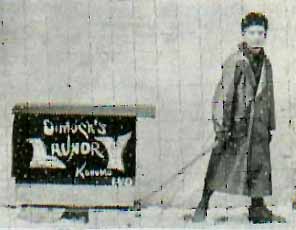
Earnest Norris
Delivering bundles of laundery in Hoopeston, Illnois
"way back when"
-------------------------
Posted
with permission:
Prudy Paulius
“Portrait and Biographical Album, Vermilion Co., IL “
Chicago: Chatman Brothers, 1889
Page 679
Thomas J.
Allison
Thomas J. Allison, Alvin, farmer was born on the 30th
of September, 1840 Newell township, Vermilion
county, Illinois, and is the son of Otho and
Mary
(Leonard) Allison. He enlisted on the 15th
of August, 1861, in Co. K, of which he was
fifth-sergeant, 37 Ill. Vol., Col. J. C. Black. He
participated in the battles of Pea Ridge, Prairie
Grove, and Van Buren, Ark..; Sugar Creek, Neosho, Newtonia, Cape Girardeau and Chalk Bluffs, Mo., and
the siege of Vicksburg. He was taken prisoner in
Louisiana on the 29th of September, 1863,
and held in confinement until the 22d of July,
1864. He was married on the 26th of
March, 1867, to Samantha Cunningham. They have two
living children: Bertha and Charley. He is re a
republican and a Methodist.

Contributed
by Mary Paulius
“Portrait and Biographical Album, Vermilion Co., IL “
Chicago: Chatman Brothers, 1889
Page 726
Beriah
Haworth
Beriah Haworth
resides on Section 14, Range 12, Elwood Township,
Vermilion County, near the place where he was born,
Sept. 155, 1847. The father of Beriah was
named David, who is now deceased. Our subject
was educated in Vermilion Grove Seminary, and has
always followed farming as his occupation, and has
lived in this township on his present farm as long
as he can remember.
Our subject was united in marriage with Miss
Anna Lewis (Oct. 30, 1879), daughter of
William Lewis
(deceased) a pioneer of Crab Apple Grove, just
across the line in Edgar County, Ill., but has lived
mostly in this county. Three children have
come to brighten the home of our subject, named
respectively: Carrie W., born Sept. 13, 1882,
Homer, Oct. 12, 1884; and Mary, Dec. 6, 1888.
Mr. Haworth owns a farm of seventy-five acres of
good land, and in connection with his agricultural
pursuits in engaged in stock-raising. His
favorites are the Clydesdale and Morgan horses,
Short-born cattle and Poland-China Swine.
Our subject and his estimable wife are devoted
members of the Quaker Church. Mr. Haworth,
politically, votes the straight Republican ticket,
but has carefully refrained, from the cares and
responsibilities of the office, preferring to give
his time and attention to his farming interests.

Contributed
by Mary Paulius
“Portrait and Biographical Album, Vermilion Co., IL “
Chicago: Chatman Brothers, 1889
Page
650 and 651
John W. Fisher
John W. Fisher, of Carroll Township is
recognized as one of its most wealthy farmers, who
has accumulated a fine property solely by the
exercise of his own inherent industry and
perseverance. His early advantages were quite
limited, he being thrown largely upon his own
resources and obliged to fight the battle of life
for some time with little to encourage him.
The fact that he is now the owner of 980 acres of
land is sufficient in dedication of manner in which he
has spent his time, and illustrates forcibly what he
may accomplish by a resolute will, prudence, economy
and good management.
The subject of this sketch was born Jan. 25, 1840,
on the old Fisher homestead in this
township where he
grew to man's estate and acquired a practical
education in the common school. He worked on
the farm and about the time of reaching his majority
was married in 1861 to Miss Mary L. Dye. After
marriage Mr. and Mrs. Fisher settled on forty acres
of land in Carroll Township, which Mr. Fisher had
purchased prior to this time and which formed the
nucleus of his present large estate. He later
received from his father's estate 176 acres, and
like the wise man of Scripture, has been enabled to
add to his talent in a marked degree. Upon
locating here, his land was a cornfield without
trees, and the improvements which embellish the
present homestead have been effected by him.
Eight children were born of the union of Mr. and
Mrs. Fisher, the eldest of whom, a son, Everett,
died at the interesting age of fifteen years; Charles married
Miss Jennie Meyers and lives in
Sidell Township, they have one child, Charles who is
farming near Sidell; Olive died when two years old;
Eddie is home with his parents; Armeda married
Douglas Miller of Carroll Township, and they have
one child, Winona; Mattie died when eight years old;
Josephine and Jacob remain with their parents.
Mr. Fisher votes the straight Democratic ticket, but
in looking after his extensive farming interest, has
a little time devote to politics.
Our subject is the son of David P. and Jane (Weaver)
Fisher, the former a native of Ohio and the latter
of Massachusetts. The maternal grandfather of
our subject, Michael Weaver, lived to be a
centenarian and was one of the leading pioneers of
this country, to which he came from Ohio where he
had accumulated a large amount of property. He
was noted for his strict honesty and upright
dealings with his fellow men. The Weaver
family was of excellent ancestry, and various
members of them are reverted to elsewhere in this
album.
David P. Fisher, the father of our subject, lived in
Indiana before coming to this State and had only $1
in his pocket when he came to this country. By
untiring industry and great prudence in living he
gained a solid footing, financially, becoming the
owner of nearly 1,000 acres of land. His
career is that of an upright man had a good citizen
and he lived to reach the age of seventy-two years,
passing away in 1880. His wife survives and
lives with her son Michael, being now seventy-six
years old. The five children of the parental
household were named respectively: Michael,
John W., our subject, Mary J., George W. and
Lucinda. Mary was married and died at the age
of twenty-four years, leaving two daughters, Jeannie and
Nora. The other brothers and sister of
our subject are still living.
Mrs.
Fisher is the daughter of Lawrence and Mary Ann (Van Treese) Dye, to whom were born nine children, viz;
Hiram, (deceased) Martha, Phoebe, (deceased)
Elizabeth, Albert who died in infancy, Angeline,
John, Mary L., Mrs. Fisher. All but the youngest
were born in Kentucky. Mrs. Fisher was only one and
one-half years old when her parents came to Illinois
and settled in Georgetown Township. The mother died
at the age of forty-three years. The father lived
to be seventy years old. During the Civil War and
when he was past fifty years old, he enlisted as a
Union soldier from conscientious motives, feeling
that it was his duty to give his services to his
country.

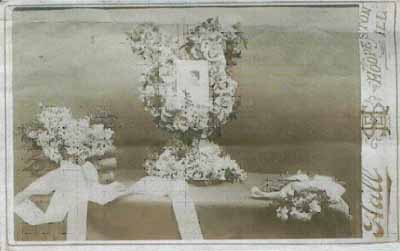
Emma T. Clark Funeral
(Contributed by Mary Paulius)

Jacob S.
McFerren
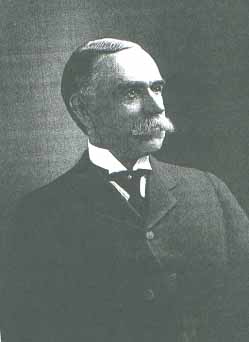
J. S. McFerren
The Hibbard House, at
the time of its building, was the finest hotel in
the county, and the stores are almost all
unoccupied. The line of Market Street has been
pretty nearly abandoned by the mercantile gentlemen,
although some good stores remain there.
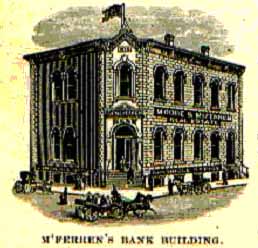

The fine bank building built by
Mr. McFerren
as a bank, and with
his partner, as a real estate office, and by H. H.
Dyer as a law office, on main floor. The entire
basement is occupied by the “Chronicle “office
editorial and press rooms. Above, the Masonic
fraternity have an elegant lodge-room. The building
cost $5,000.00, and is the finest building in
town. W. R. Clark and Dr. T. J. Roof built, in
1877, the two-story brick double store across the
street, west from the bank. It is 50x100, occupied
by the proprietors below, and by the Odd-Fellows
over Dr. Roof’s and as a public hall over
Mr.
Clark’s. The building cost $7.500.
Thomas Hoopes,
the same year built the double brick store north of
the bank. It is 45 x 80, and occupied for stores
below and offices above. It cost $7,000. The
little city contains a number of other substantial
business houses and residences that would appear
respectable in any town in the west.
Page 747 History of Vermilion
Co.

Jacob S. McFerren, Hoopeston, banker and real estate
broker, was born in Warren county, Ohio on the lst
of October, 1845. His parents were
William and
Eliza (Snyder) McFerren. He received a business
education at Bartlett’s Commercial College,
Cincinnati. His father having always followed the
mercantile business, he was reared to the same
pursuit. At the age of fifteen he quit school to
take a half interest with his uncle in a store at
Level, Ohio, the latter furnishing the capital, and
he conducting the business and sharing one half the
profits, the style of the firm being, A. S. McFerren
& Co. Two years later his uncle formed another
partnership, and commenced operating in grain: but a
heavy decline and other speculations caused the firm
to suspend with heavy liabilities, which so affected
the firm of A. S. McFerren & Co. that the quite
expensive business which the subject of this sketch
had built up was discontinued, and their affairs
were settled up, and all their debts paid in full.
In his short, independent business career Mr. McFerren had made a clear profit of $3,000; but by
the unfortunate speculations of his partner he lost
all but $800, which he reduced his capital that he
was obliged to begin on a salary. So, in August,
1865, he started west, and located at Paxton,
Illinois where he took charge of the books of J. W.
Scott, of that place for a short time, and afterward
found a permanent situation with R. Clark, one of
the oldest merchants of Paxton, as book keeper. At
the end of the year Mr. Clark’s health failing, he
offered to turn over his stock of goods to his
nephew, A. L. Clark, and Mr. McFerren, and loan them
all needed capital. The proposition was accepted,
became Clark & McFerren. This partnership and
enterprise proved highly fortunate. Their trade
suddenly attained a basis of substantial prosperity,
and their capital steadily and rapidly increased.
Mr. McFerren at length determined to
embark in banking and real estate brokerage, and
accordingly associated with himself T. W. Chamberlin under the
style of McFerren & Chamberlin,. They opened a bank
in Hoopeston on the lst of August, 1872, and did a
remunerative business, passing safely through the
panic of 1873, keeping their doors open throughout
that trying period. Early in 1874, owing to
ill-health, Mr. Chamberlin retired from the
partnership. Mr. McFerren’s bank is one of the most
safely conducted institutions of the kind in the
country, and its credit is deservedly high. The
business transacted by it has constantly augmented
in volume. Maintaining his working capital at a
uniform figure, he has judiciously invested the
profits in first-class farming lands in Vermilion,
Iroquois and Ford counties, which are now valued at
$60,000. He attributes his success to careful
economy, keeping his own books, and maintaining a
close, personal supervision over the details of his
business, and to strictly living up to his
contracts, and compelling others to a like exactness
in discharging their contracts with him. In the
spring of 1877 Mr. McFerren was elected first Mayor
of Hoopeston on the temperance ticket. The town had
always been controlled by the liquor interest, but
at the end of his term of two years it was cleared
of every saloon and groggery. It is not the least
of his merits that he has been a consistent and
earnest laborer in the temperance cause, and has
thus assisted largely in building up the city,
infusing life into it, rendering it respectable and
contributing to its good name and reputation. He
has been treasure and director of the Hoopeston
District Agricultural Society, and is at present
school treasurer of town 23, range 12. He was one
of the original projectors of the Ford County
Agricultural Society, and is still a stockholder in
it. Having a taste for travel, Mr. McFerren has
satisfied it by an extensive tour of the United
States, from the Atlantic to the Pacific, and from
the British provinces to the Gulf of Mexico. He was
married on the 4th of April, 1871, to
Miss Susie P. Clark, daughter of R.
Clark, who died
on the 28th of July, 1871. His parents
have been life-long members of the Universalist
church. He is a republican in politics.

From: Portrait and Biographical
Album
Pages 740 & 741
Chicago, Chatman Brothers 1889
(Contributed by
Mary Paulius)
Allen Lewis.
It
is fifty-one years since Mr. Lewis, the oldest
living resident of his township, first set foot upon
the soil of Vermilion County. He had emigrated
hither from his native state of New York, coming on
foot the entire distance, with the exception of
fourteen miles, being about one month on the way.
His purpose was to secure a tract of new land in the
wild West, and which he hoped in time would prove to
him a valuable acquisition, although the prospect
then was anything but flattering. He entered
ninety-seven acres on section 22. After six
months stay, he went back to New York State, where
he remained three years and was married to Miss
Jeanette Green.
Upon returning to this county for permanent settlement,
our subject and his young wife made a grip from
Chicago to Rossville in a "Prairie schooner."
They sojourned near Rossville four or five years,
then rented an hotel, which furnished one of the
early stopping places for travelers coming from
Milford, and was the first house of its kind in this
region. Mr. Lewis officiated as "mine host"
three or four years. He had entered
considerable land in the meantime, but finally
concluding it was little value, sold it at $4 to $5
per acre. There were few people coming in at
first, and wild animals, especially deer, were
plentiful. Of these he believes that he has
seen as many as 300 in one day, so whatever else the
settlers lacked in the way of provisions there was
plenty of wild meats, and in the summer season there
were quantities of gooseberries, mulberries,
blackberries, etc.
Mr. Lewis during his residence in this county has
improved a greater many acres of land. His
present farm cost him only $1 per acre, and he
settled upon it in 1853. Prior to the
establishment of a post office at Rossville he was
made Postmaster of a place called Rio, and this
frequently was the result of an income for the
Postmaster of only $1.25 per quarter or about $5 to
$6 a year. He assisted in the establishment of
the first school, and has a large portion of the
time officiated as School Treasurer.
To our subject and his estimable wife there were born
four children, only two of who are living.
They son Sylvester, married Miss Hattie
Clanahan;
and they have four children, and live three-fourths
of a mile north of the old farm. Isabelle, the
daughter, is the wife of Albert Boardman, and they
are living in Rossville, for the purpose of
educating their two children. Mrs. Jeanette
(Green) Lewis was born in Ontario County, N.Y., and
is the daughter of Benjamin Green, who was one of
the early settlers of that region, and whose farm
adjoined that of the Lewis family.
Mr. Green
died some years ago; he was the father of Ira
Green,
who is represented elsewhere in this Album.
The parents of our subject were Sylvester and Catherine
(Dubois) Lewis, and the father was born in New York
State, near the Hudson River. He came to the
West while it was a wilderness, living in the woods
four years before seeing a wagon. He opened up
a good farm upon which he spent the remainder of his
days. He belonged to the Presbyterian Church,
while his wife was a Baptist in religion. They
were parents of nine children. Allen our
subject, in religious matters, inclines to the
Presbyterian Church, of which he is a member at
Rossville. He is one of the oldest living
residents of his township, and has made for himself
a good record as a man and a citizen.

From: Portrait and Biographical
Album
Pages 783
Chicago, Chatman Brothers 1889
(Contributed by
Mary Paulius)
Gwilse
Tilton
is a
prominent merchant and Postmaster in the township in
which he lives. His father Enoch Tilton, was
born in Fayette County, Pa. His mother Elizabeth
Wilson, was born in Beaver county, of the
same state. They settled in the place that Mr.
Tilton died. Not long after this, his wife
also died at Potomac, this county in 1887, leaving a
family of nine sons, of whom our subject was second.
The place of his birth was Beaver County, Pa., and
the time Jan. 8, 1836. In 1862 he traveled to
this county, and taught school for years. Thus
for thirteen years of his life had been spent in
teaching, as he had been a school-master nine years
prior to his coming to Vermilion county. He
then found employment as a clerk under the late Richard
James. This position he kept for two
years, after which, in 1868 he formed a partnership
and went into business for himself. Eventually
Mr. Tilton bought out the entire business, which he
has since conducted in his own name. He
carries an unusually fine stock of merchandise.
In addition to his store at Catlin, he owns one
which is operated by his son.
Mr. Tilton was appointed Postmaster under the
administration of Cleveland. He held the
office of Superintendent and almost all the offices
in the township. For fourteen years he was
connected with the Vermilion County Agricultural
Society, being its President for three months, and
it's Vice-President for Several years. Our
subject is a member of the Catlin Lodge A.F. & A.M.,
No. 285, and was Master of the lodge for five years.
Our subject's life is a notable record of vast energy,
untiring labor, and fervent and unfading courage.
Those who knew him familiarly loved and valued him
more and more, the longer their intercourse lasted.
His marriage with Elizabeth Albright, occurred in
Ripley county, Ind. They had three children:
Charles Virgil, who is in company with his father;
Elsie Venus, who is the wife of A. McGregor; and
Bertie Victor. Mr. Tilton has been a
correspondent of the "Danville News" for fifteen
years. Mr. Tilton is rather a good and loveable
traits and sentiments which he so happily
possesses.
 |